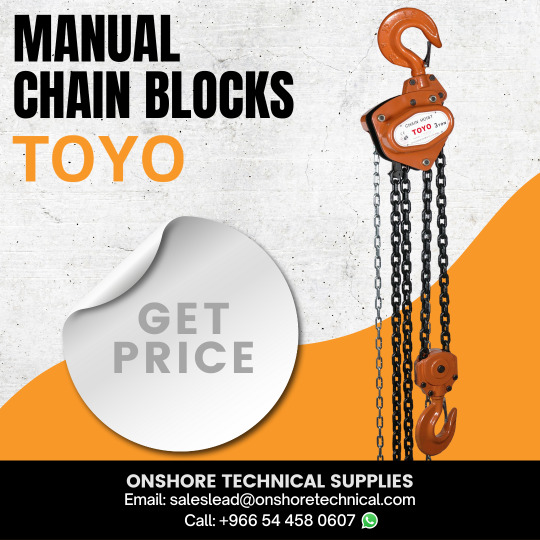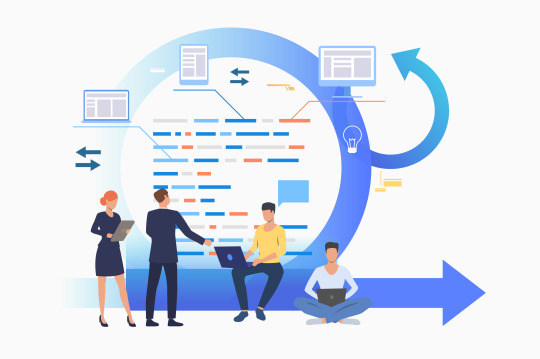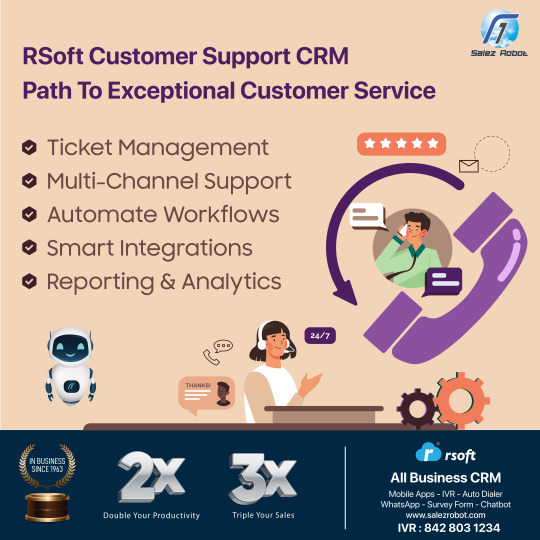#CustomerCentric
Explore tagged Tumblr posts
Text

Trust isn’t something you can buy; it’s something you earn—especially in #digitalmarketing. While authority may open the door, trust is what builds lasting relationships. Here’s how we prioritize trust-building in every campaign:
Transparency
Consistency
Value First
👉 🌐 www.varundigitalmedia.com 👉 📧 info@varundigitalmedia.com 👉 📲 (+1) 877-768-2786
#buildingtrust#trustoverauthority#marketingtips#customercentric#transparencymatters#brandtrust#socialmediamarketing#contentmarketing#marketingstrategy#growwithus#trustmatters#digitalmarketingtips
8 notes
·
View notes
Text
Onshore Toyo




Elevate your lifting game and experience pure power in your hands with Toyo's game-changing Wire Rope Winches.
Designed with YOU in mind, these winches redefine convenience, control, and confidence in every lift.
🔗 Your Power, Your Control: With Toyo Wire Rope Winches, you're in charge. Feel the thrill of controlling heavy loads with precision, making lifting tasks a breeze.
⚙️ Effortless Mastery: Wave goodbye to manual labor. Toyo Wire Rope Winches bring ease to every lifting operation, letting you conquer challenges with efficiency.
🔄 Versatile Performance: From construction to logistics, Toyo's winches adapt to your needs, ensuring every lift is a success story waiting to happen.
🚀 Elevate Your Potential: Boost your lifting potential with Toyo Wire Rope Winches. Minimize effort, maximize productivity, and see your goals reach new heights. Ready to embark on a lifting journey like never before? Experience the power and control of Toyo Wire Rope Winches.
Get in touch today: 👉 WhatsApp: wa. me/966544580607
📞 Call: +966 54 458 0607
📧 Email: saleslead@onshoretechnical.com
💻 Website: lifting.onshoretechnical.com
👉 Like 👍 | Share 🔁 | Comment 💬 | Tag your lifting partners! 🏆🔧
#ToyoLifting#WireRopeWinch#CustomerCentric#ElevateYourLift#EfficiencyBoost#PrecisionControl#IndustrialInnovation#LiftingSolutions#WorkplaceProductivity#ReliableTools#Toyo#Wirerope#IndustrialEquipment#MaterialHandling#Lifting#Winching#HeavyDuty#Manufacturing#Efficiency#Productivity#WorkplaceSafety#Reliability#Durability#Quality#Engineering#Logistics
4 notes
·
View notes
Text
Product Engineering Services
Product engineering services play a crucial role in helping businesses develop, design, and launch innovative software products. These services focus on creating high-quality products that meet both functional and non-functional requirements, offering a seamless user experience. Product engineering teams work on every stage of the product lifecycle, from conceptualization and design to development, testing, and maintenance. By leveraging the latest technologies, methodologies, and best practices, they ensure that the final product is scalable, secure, and optimized for performance, providing a competitive edge to businesses in a rapidly evolving market.
With a strong focus on agility and customer-centric solutions, product engineering services enable companies to bring their ideas to life quickly and efficiently. These services also include continuous monitoring and improvement, ensuring that the product evolves with changing market trends and user needs. Collaborating with experienced product engineers can significantly reduce time-to-market and development costs, while also enhancing the product’s overall quality and user satisfaction.
Click here to know more: https://www.intelegain.com/software-product-engineering-services/
#ProductEngineering#SoftwareDevelopment#ProductDesign#TechInnovation#SoftwareSolutions#AgileDevelopment#ScalableSoftware#UserExperience#ProductLifecycle#SoftwareTesting#ProductLaunch#CustomerCentric#SoftwareOptimization#TechServices#ProductMaintenance#DevelopmentLifecycle#SoftwareEngineering#InnovationInTech#MarketTrends#ProductQuality#ContinuousImprovement#ProductEngineeringServices
1 note
·
View note
Text
#DesignThinking#ProductManagement#UXDesign#UIDesign#WebsiteDesign#WebDevelopment#UserExperience#DigitalTransformation#CustomerCentric#Innovation
0 notes
Text
Creating a Customer-Centric Culture: The Heart of Effective CRM
In today’s competitive business landscape, a customer-centric culture is essential for long-term success. Creating a customer-centric culture: the heart of effective CRM is not just about having the right tools and technology; it’s about embedding a mindset that prioritizes the customer at the very core of your organizational ethos. By fostering a culture that revolves around customers,…
#best practices for brand management#Branding strategies for small businesses#building brand loyalty#business growth strategies#corporate social responsibility#Creating#creating a strong brand identity#CRM#Culture#customer relationship management#CustomerCentric#digital marketing for startups#e-commerce tips for businesses#Effective#Heart#how to scale your business.#how to start a successful business#importance of social media for businesses#influencer marketing for brands#small business funding options#top business trends 2024
0 notes
Text

💡𝗦𝗵𝗮𝗱𝗼𝘄 𝗔𝗜: 𝗙𝗿𝗼𝗺 𝗛𝗶𝗱𝗱𝗲𝗻 𝗥𝗶𝘀𝗸 𝘁𝗼 𝗜𝗻𝗻𝗼𝘃𝗮𝘁𝗶𝗼𝗻 𝗘𝗻𝗴𝗶𝗻𝗲 AI adoption is outpacing governance, and employees are quietly reshaping workflows with unsanctioned tools—���Shadow AI.” This is a loud knock on the door—a signal that official systems aren’t meeting employee needs—as well as a compliance and security risk. Organizations ignoring this phenomenon risk falling behind, while those answering the knock can turn these hidden innovations into competitive advantage. 💡 𝗪𝗵𝘆 𝗜𝘁 𝗠𝗮𝘁𝘁𝗲𝗿𝘀 Shadow AI sends a clear signal: “Our needs aren’t being met.” Organizations that listen can turn these signals into actionable roadmaps for innovation. • Unmet Needs: AI for personalized outreach highlights gaps in existing systems. • Change Agents: Grassroots innovators often outpace top-down initiatives. • Testing Ground: Shadow AI provides a space for experimentation and scalable wins. 💡 𝗪𝗵𝘆 𝗦𝗵𝗮𝗱𝗼𝘄 𝗔𝗜 𝗶𝘀 𝗗𝗶𝗳𝗳𝗲𝗿𝗲𝗻𝘁 Unlike previous Shadow IT trends (ie. personal devices on company networks), AI reshapes workflows, enhances productivity, and transforms decision-making. • The Risks: Compliance and data security are major challenges. • The Rewards: Strategic use unlocks efficiency and enterprise innovation. 💡 𝗧𝘂𝗿𝗻𝗶𝗻𝗴 𝗦𝗵𝗮𝗱𝗼𝘄 𝗔𝗜 𝗜𝗻𝘁𝗼 𝗦𝘁𝗿𝗮𝘁𝗲𝗴𝘆 To harness Shadow AI’s potential, organizations can: 1️⃣ Listen for Signals: Identify gaps employees are addressing with unsanctioned tools. 2️⃣ Sanction Smart Solutions: Replace risky tools with secure, enterprise-grade options. 3️⃣Enable Safe Experimentation: Create environments for testing and iteration. 4️⃣ Empower Employees: Provide training for responsible AI use. 💡 𝗖𝗮𝗹𝗹 𝘁𝗼 𝗔𝗰𝘁𝗶𝗼𝗻 Shadow AI already exists in your organization. Ignoring it risks falling behind competitors who embrace its potential. Audit your organization now to uncover Shadow AI activities and begin transforming these grassroots innovations into strategic advantages. 💡 𝗛𝗼𝘄 𝗮𝗿𝗲 𝘆𝗼𝘂 𝗵𝗮𝗿𝗻𝗲𝘀𝘀𝗶𝗻𝗴 𝘁𝗵𝗶𝘀 𝗶𝗻𝗻𝗼𝘃𝗮𝘁𝗶𝗼𝗻 𝗲𝗻𝗴𝗶𝗻𝗲?
#ai#activation ~ engagement#critical thinking initiative innovation#analytics ~ big data#customercentric#sales and service optimization
0 notes
Text
User Experience/User Interface Design (UX/UI) – A side by side comparison
In a business-technology driven world, consumers are aware of what products and schemes they are getting themselves into. Products play a rather great deal in this cycle. A product’s popularity is based on the way, a customer feels about it. More particularly, how it solves the problem for its customer without having to go through a routine or do something out of the ordinary in order to get the job done. Here is where User Experience and User Interface Design comes into play, where the developer puts themselves in the shoes of their customer to get a better insight. A product can have all possible features yet can be unpopular just because it has a complex design. Thus eventually, a product’s design contributes a significant deal to its success as well. Hence, to improve its User’s experiences the UI/UX designers were hired. Often people confuse UX designs with UI designs. By the end of this read you will have a basic outline of how each varies.

What is UX?
UX Design is the study and understanding of a user’s behavior & motivations with a goal of providing better digital experience. Before starting a design, every designer has to keep in mind that the product or service they design should answer the most basic questions — WHAT, WHY and HOW?
Why User Experience Design? Most problems are actually problems of perception.
User experience design (UXD) allows you to create products that makes the user feel that he/she had been a priority or that the product’s design had been tailored to fit them. The entire design process relies on acquiring details and integrating those details into the product. Now a days, people are more familiar with the technologies available than they have ever in the past decade hence they have higher expectations. User Centered Experience Design, has been a proven factor behind these successful designs.
User-Centered Design
One of the most effective design methodologies is the user-centred Design. The main theme of this user-centred design is that it is built purely on the needs & requirements of the end-user. To build an uncompromisable and flawless design, a UX designer should do his/her fair share of user research, buyer persona, design frames and prototypes. Once you have mapped an outline it is essential to include testing into it too. This doesn’t mark the end of the routine; the designer should identify & include relative issues as well.
Role of the UX Designer
UX Design is the study and understanding of a user’s behavior & motivations with a goal of providing better digital experience. Before starting a design, every designer has to keep in mind that the product or service they design should answer the most basic questions — WHAT, WHY and HOW?
What is UI?
First things first to those debating, UX and UI designs are two different elements of user experience with a product. However UI in other words can be said is a part of UX. As User experience arises from interaction with the User Interface. UX refers to the user experience, that focuses on how something works & how people interact with it. User Interface, focuses on how the layout design can appeal to the user. To help you understand better, consider a car, UX will refer to the car’s gear, steering etc., and UI will refer to the model, color of the car. Together they provide a pleasant experience to the user. An UX designer makes sure that the user can understand and follow the logical flow of the product, whereas the UI designer ensures that the user enjoys the looks and feels of the product.
What includes as the UID?
Designers strive to create designs, which pleases its users yet provide a level of ease to use. UI designers design graphical user interfaces (GUI) but nowadays UI is not limited to just graphics. Voice-controlled interfaces, oral-auditory and gesture-based interfaces as well fall under UID. This is because of the psychology that the less the user goes through the motions of control the more immense their experience will be and more likely they are to return to your product or service.
What is a perfect UID/UXD?
Let me give you an example. In case a company figures out an ideal product and designs based on a human-centered design process which has everything from feels and looks, perfect modules & interface and the expected user experience. Then everybody has one or wants one.
How to perfect a UID/UXD?
Take your time, dedicate to research, constant improvement, polishing the details and editing will make a big difference. In the long run, companies who did not take their time will slowly become obsolete, and people will forget they ever existed.
Take a step back from the pressure of having to deliver a perfect product to your competitors and customers. Start by defining what is important to you and how your product can deliver that. You have to make sure that your product is relevant and effective.
A major business giant, who runs a successful company for more than two decades, advices startups to focus on three questions,
“What do customers want?”
“How their needs can be satisfied?”
“What can we do to enhance our customer service and value?”
Be Consistent
To contribute to the betterment of the design, ask these questions. How do your customers feel about your product? What do they use it for? Have you experienced its environment yourself? What issues do your customers have on a daily basis that might hinder their experience? The answer to these questions can’t be found in the comments and review section. Best products come from listening to the voices of the users. To summarize, when coming up with an idea or developing a product put yourself into your user’s shoes. Stick to simple rather than an attractive complex layout. Work in small groups. Contrary to the popular belief, small groups with strong decision makers are more successful. Analyze and reiterate. Take your time to perfect the modules.
0 notes
Text
Free User Review Template + Actionable Guide to Build Customer-Centric Products What’s inside? ✅ A step-by-step framework for analyzing user feedback ✅ Customizable design to suit your project needs ✅ Tips to create products that truly resonate with your users 📥 Download now on Figma Community and start building products your customers will love! https://lnkd.in/g4hPZwnN
0 notes
Text
Boost Your Business with Agile Software Development by Tech Mind Developers

In today’s fast-changing digital world, businesses need software solutions that adapt quickly to their evolving needs. At Tech Mind Developers, we specialize in Agile Software Development, ensuring faster delivery, flexibility, and efficiency for your projects. Our approach focuses on continuous collaboration, ensuring you get the best results in less time.
What is Agile Software Development?
Agile Software Development is a modern approach to building software that emphasizes flexibility, teamwork, and customer satisfaction. Unlike traditional methods, Agile focuses on delivering smaller updates frequently rather than waiting for a final product. This ensures your business always has the latest and most useful tools in its hands.
Benefits of Agile Software Development
Faster Results: Deliver projects in smaller parts, allowing you to start using them sooner.
Flexibility: Make changes as your needs evolve without delaying the entire project.
High Quality: Frequent testing ensures every part of the software is efficient and error-free.
Customer-Centric: Regular communication keeps you in control, ensuring the software meets your expectations.
Cost-Effective: By catching issues early, you save on costly changes later.
Why Agile Matters for Your Business
Agile isn’t just a buzzword — it’s a proven method to stay competitive. Businesses in healthcare, retail, education, e-commerce, and startups use Agile to quickly adapt to market trends, enhance customer experiences, and streamline their operations. At Tech Mind Developers, we bring the power of Agile to all industries, ensuring every project is delivered efficiently and meets your goals.
Why Choose Tech Mind Developers?
At Tech Mind Developers, we’ve mastered Agile Software Development to deliver projects that align perfectly with your business goals. Here’s how we help:
Continuous Updates: Regular updates ensure your software remains relevant and effective.
Collaboration: Our team works closely with you to understand your requirements and keep you involved.
Tailored Solutions: We don’t believe in one-size-fits-all. Each solution is customized for your needs.
On-Time Delivery: Thanks to Agile, we deliver faster without compromising on quality.
Ready to Go Agile?
If your business needs software solutions that are fast, flexible, and reliable, look no further than Tech Mind Developers. Our expert team is ready to build software that keeps up with your growth.
📞 Phone: +91–7835019421 📧 Email: info@techminddevelopers.com 🌐 Website: https://www.techminddevelopers.com
#agilesoftwaredevelopment #techminddevelopers #softwaredevelopment #businessgrowth #itservices #agilemethodology #fastsolutions #customercentric #customsoftwaresolutions #itconsulting #businesssolutions #digitaltransformation #softwaresolutions #efficiencyboost #collaborativesolutions
#agilesoftwaredevelopment#techminddevelopers#softwaredevelopment#businessgrowth#itservices#agilemethodology#fastsolutions#customercentric#customsoftwaresolutions#itconsulting#businesssolutions#digitaltransformation#softwaresolutions#efficiencyboost#collaborativesolutions#mobile app development#softwaredesign#websitedevelopment#delhincr#mobileapplications#aligarh
0 notes
Text

Customer Log Book: Client Tracking Book for Salons, Barber Shops, Spa business, Hair Stylists, to Record Clients and Sales and Services Paperback – March 6 2022
by Busyness Press (Author)
If you got a small or big business in the service industry, particularly beauty and wellness, this log book is all that you need. Product Details:
120 pages of log book tables to record all customer names, dates, time, services, and prices. Please click 'Look Inside' feature to see the interior.
Glossy paperback cover; Artistic pretty girl in front cover, Salon equipment designs on the back cover
8.5 x 11 Inches in size
Grab one now and make this a staple document in you business!
#customerlogbook#organization#recordkeeping#customerrecords#businessmanagement#smallbusiness#entrepreneur#customertracking#customerengagement#customerexperience#customerservice#customerloyalty#customerretention#customerinsights#customeranalytics#customerdata#customerfeedback#customerjourney#customerrelationshipmanagement#customerdatabase#customerinformation#customerintelligence#customercentric#customerfocused#customersuccess#customerengagementstrategy#customerretentionstrategy#customerlifecycle#customermanagement
0 notes
Text
How Design Thinking Enhances Digital Marketing Campaigns
In today’s rapidly evolving business landscape, digital transformation has become a critical strategy for companies to stay competitive. With new technologies emerging constantly, businesses must adapt quickly to ensure they stay relevant and keep customers at the forefront. However, implementing a seamless digital transformation requires more than just adopting the latest tech. This is where design thinking steps in to ensure a human-centered approach, helping businesses create impactful and user-friendly digital marketing strategies.
What is Design Thinking?
Design thinking is a problem-solving framework that prioritizes empathy for the user. It was popularized in the 1960s by Buckminster Fuller, who emphasized the importance of creating holistic solutions to global challenges. Today, design thinking has been broken down into five actionable steps: empathize, define, ideate, prototype, and test.
By incorporating these steps into digital marketing campaigns, businesses can ensure that their transformation efforts are not only effective but also user-focused and adaptable.
How Design Thinking Enhances Digital Marketing
Empathize with Your Audience
The first step in design thinking is empathy. To develop an effective digital marketing strategy, businesses must understand their customers’ needs, behaviors, and pain points. By observing how users interact with your brand online, analyzing what they search for, and identifying what motivates them, you can craft personalized solutions that speak directly to their challenges. This human-centered approach allows businesses to create meaningful connections with their audience.
Define the Core Problem
Once you understand your customers, the next step is to clearly define their problems. For instance, during the pandemic, many customers faced limited store hours, which hindered their ability to shop in person. A retailer might define this issue as, “In order to make our products more accessible, we need to offer online shopping.” Focusing on specific user needs enables businesses to create targeted marketing campaigns that offer real solutions.
Ideate for Innovative Solutions
Ideation is where creativity comes into play. After identifying the key challenges, it’s time to brainstorm a wide range of solutions. Encourage input from different departments such as marketing, sales, and IT to generate diverse perspectives. Collaboration in this stage often leads to the most innovative digital marketing ideas, whether it’s launching a new social media campaign, introducing personalized customer journeys, or optimizing a mobile-first strategy.
Prototype for Tangible Outcomes
Before fully launching a campaign, it’s important to prototype your ideas. This could mean creating mock-ups of websites, apps, or even a PowerPoint that illustrates the customer journey. Prototyping ensures that your vision aligns with user expectations, and gathering feedback from team members or focus groups can provide valuable insights. This step helps to refine your strategy and avoid costly mistakes down the line.
Test and Iterate
Design thinking doesn’t stop once your digital marketing campaign is live. It’s a continuous process of testing, collecting feedback, and making improvements. Regularly gathering user data allows you to stay ahead of changes in customer behavior and adapt your marketing efforts accordingly. For example, if you notice an increase in online traffic during certain hours, you can optimize ad placement or promote time-sensitive offers to drive conversions.
The Benefits of Design Thinking in Digital Marketing
By incorporating design thinking, companies can develop user-centric marketing strategies that not only solve problems but also anticipate future needs. This approach leads to more engaging digital experiences, increased customer loyalty, and improved conversion rates. It also encourages teams to collaborate across departments, fostering a culture of innovation.
The Takeaway
Incorporating design thinking into your digital transformation strategy ensures that no customer is left behind. As digital marketing becomes more complex, businesses must continually innovate and adapt to stay ahead of the curve. By focusing on empathy, problem definition, and iterative testing, you can create campaigns that resonate deeply with your target audience. Partnering with a team experienced in marketing transformation and digital strategy can help make this process smoother and more successful.
https://simplyintense.com/#Getintouch
#DigitalMarketing#DesignThinking#DigitalTransformation#MarketingStrategy#UserExperience#CustomerCentric#MarketingInnovation#TechTrends#SocialMedia#MarketingTransformation#BusinessGrowth#CustomerJourney#DigitalStrategy#EmpathyInMarketing
0 notes
Text
Customer Relationship Management
Gain a competitive advantage by unlocking a 360-degree view of the customer journey with Microsoft Dynamics 365.
We work with you to leverage technology such as generative AI and Microsoft Copilot to help deliver streamlined, hyper-personalised customer engagement, that empowers your team and gives you a truly holistic view of your revenue stream.

#CRM2024#CustomerExperience#ClientRetention#CustomerSuccess#AUSBusiness#CRMStrategy#DigitalTransformation#CustomerCentric#TechInBusiness
0 notes
Text
CUSTOMER CENTRIC ERA
0 notes
Text
Customer-Centric Growth: Strategies to Enhance Loyalty and Drive Revenue
In today’s competitive business landscape, understanding and embracing customer-centric growth has become paramount for organizations that aim to foster loyalty and drive revenue. By focusing on the needs and preferences of customers, businesses can create more meaningful interactions that not only improve satisfaction but also pave the way for increased profitability. This article delves into…
#best practices for brand management#Branding strategies for small businesses#building brand loyalty#business growth strategies#corporate social responsibility#creating a strong brand identity#customer relationship management#CustomerCentric#digital marketing for startups#Drive#e-commerce tips for businesses#Enhance#Growth#how to scale your business.#how to start a successful business#importance of social media for businesses#influencer marketing for brands#Loyalty#Revenue#small business funding options#Strategies#top business trends 2024
0 notes
Text

Every Seller, Every Interaction, Every Deal
As we accelerate into 2025, AI solutions are everywhere, each looking to revolutionize {fill in the blank}. What truly matters for you and your team?
Today’s sales leaders face two critical challenges:
Scarce At-Bats: Every qualified opportunity is high-stakes, and there’s no room for error. Sellers need a dedicated space to refine their skills before stepping into these moments.
Individual Variability: Every seller has unique strengths, weaknesses, and blind spots. Broad-stroke solutions don’t address the specific areas where each seller needs refinement.
Yet many sales leaders still rely on outdated methods that fail to optimize. 1:1s offer broad guidance but often lack situational depth. Tools that record interactions seldom deliver actionable insights aligned with buyer needs. Role-plays with and without extended audiences are limited by time, uneven feedback, and fear of failure and humiliation. Generic training programs miss the mark on addressing individual learning styles, leaving growth potential untapped, and numbers missed.
Sellers need environments that go beyond observation and passive learning—spaces where they can actively refine, experiment, and master their craft. These systems must offer practical, actionable experiences tailored to the realities of high-stakes selling.
Addressing these challenges requires a two-pronged approach: creating an environment for sellers to master their skills and ensuring alignment with buyer needs in every interaction. Two essential shifts are required to address these challenges:
1. Building Mastery Through Practice 💡
The Problem: Sellers lack a dedicated "flywheel" space to consistently refine their approach and take ownership of their own growth. High-stakes at-bats are too rare and valuable to serve as practice sessions. Fear of failure often stifles experimentation, leaving significant growth potential untapped.
Required: Tools that foster a continuous learning environment, enabling sellers to:
Practice real-world scenarios tailored to their unique challenges.
Experiment with messaging and strategies in a safe, structured space.
Receive targeted, actionable feedback that drives rapid improvement.
The Results:
Faster onboarding and accelerated skill development.
Enhanced seller confidence in high-pressure situations.
Measurable increases in win rates through sharper execution.
2. Driving Precision with Buyer Feedback💡
The Problem: Messaging misaligned with buyer priorities can quietly derail deals, leading to stagnation and often worse. Sellers often misunderstand why deals are lost, attributing failures to external factors rather than addressing actionable gaps.
Required: Systems that collect and analyze buyer feedback, delivering insights that enable sellers to:
Identify what resonates—and what doesn’t—during engagements.
Refine messaging dynamically to align with buyer priorities.
Detect churn risks and upsell opportunities to maximize account potential.
The Results:
Improved win rates by eliminating messaging missteps.
Accelerated deal velocity through buyer-informed strategies.
Stronger alignment across sales, marketing, and customer success teams.
Beyond Tools: The Cultural Imperative💡
Building a thriving sales culture requires intentionality—a commitment to systems and practices that empower sellers to perform at their best. The strategies outlined above are not just incremental improvements; they are the catalysts for this cultural shift:
Mastery Through Practice provides sellers with the confidence and skills to tackle high-stakes situations with precision.
Precision with Buyer Feedback ensures sellers adapt dynamically, aligning their approach with what truly matters to buyers.
These aren’t just tools—they’re enablers of a culture where sellers:
Experiment freely without fear of failure.
Leverage feedback seamlessly to refine their approach.
Consistently align their behaviors with buyer needs to drive results.
The path to a thriving sales culture starts here—with systems that equip sellers to execute at their best and deliver results on every interaction.
And...
The question is not whether your team has potential—it’s whether you’re creating the conditions for them to realize it.
💡What will you do differently to ensure every seller, every interaction, and every deal delivers 'more' in 2025?💡
#activation ~ engagement#critical thinking initiative innovation#sales and service optimization#customercentric#analytics ~ big data#ai
0 notes
